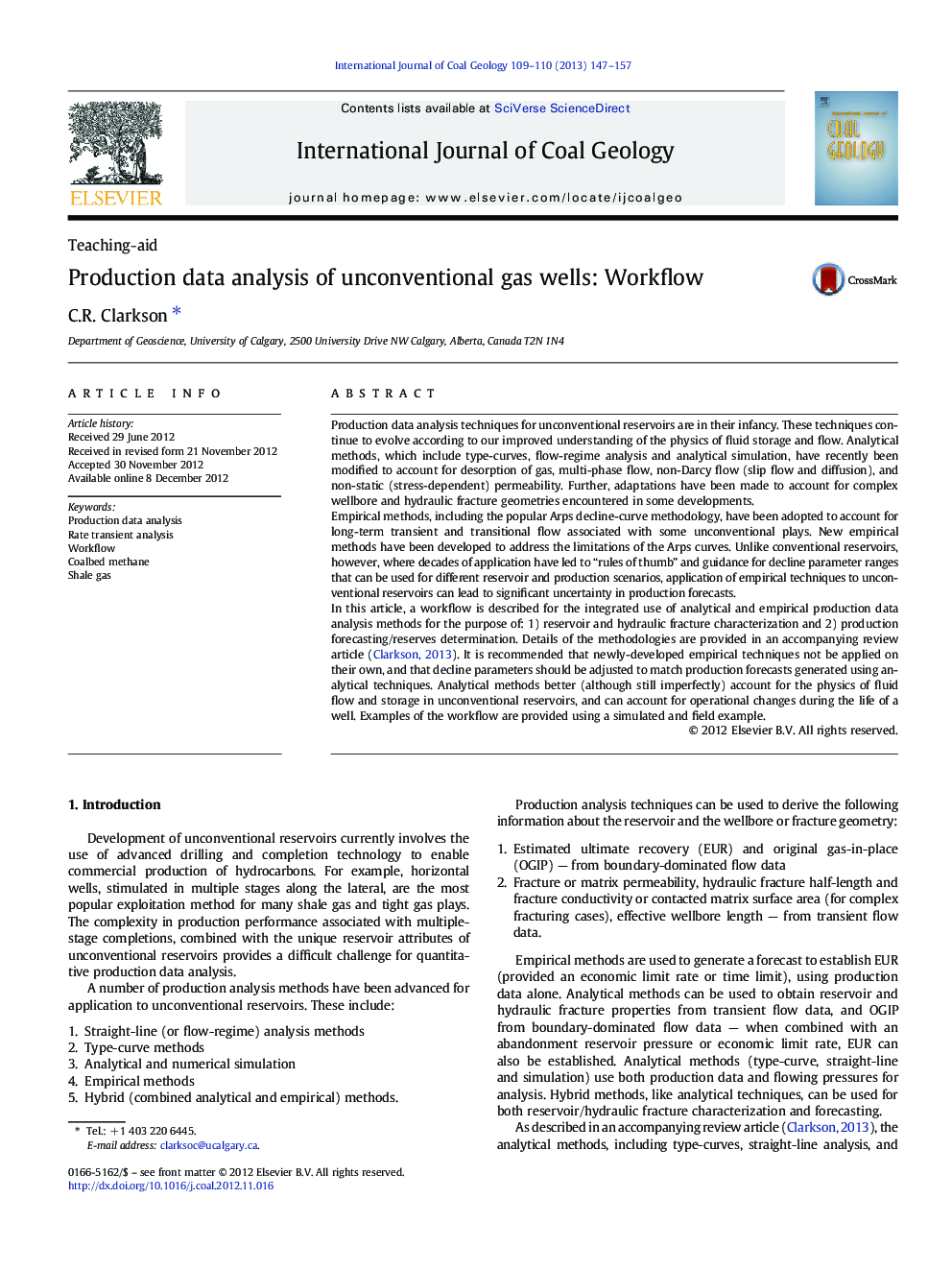| کد مقاله | کد نشریه | سال انتشار | مقاله انگلیسی | نسخه تمام متن |
|---|---|---|---|---|
| 1753364 | 1522585 | 2013 | 11 صفحه PDF | دانلود رایگان |

Production data analysis techniques for unconventional reservoirs are in their infancy. These techniques continue to evolve according to our improved understanding of the physics of fluid storage and flow. Analytical methods, which include type-curves, flow-regime analysis and analytical simulation, have recently been modified to account for desorption of gas, multi-phase flow, non-Darcy flow (slip flow and diffusion), and non-static (stress-dependent) permeability. Further, adaptations have been made to account for complex wellbore and hydraulic fracture geometries encountered in some developments.Empirical methods, including the popular Arps decline-curve methodology, have been adopted to account for long-term transient and transitional flow associated with some unconventional plays. New empirical methods have been developed to address the limitations of the Arps curves. Unlike conventional reservoirs, however, where decades of application have led to “rules of thumb” and guidance for decline parameter ranges that can be used for different reservoir and production scenarios, application of empirical techniques to unconventional reservoirs can lead to significant uncertainty in production forecasts.In this article, a workflow is described for the integrated use of analytical and empirical production data analysis methods for the purpose of: 1) reservoir and hydraulic fracture characterization and 2) production forecasting/reserves determination. Details of the methodologies are provided in an accompanying review article (Clarkson, 2013). It is recommended that newly-developed empirical techniques not be applied on their own, and that decline parameters should be adjusted to match production forecasts generated using analytical techniques. Analytical methods better (although still imperfectly) account for the physics of fluid flow and storage in unconventional reservoirs, and can account for operational changes during the life of a well. Examples of the workflow are provided using a simulated and field example.
Journal: International Journal of Coal Geology - Volumes 109–110, 1 April 2013, Pages 147–157